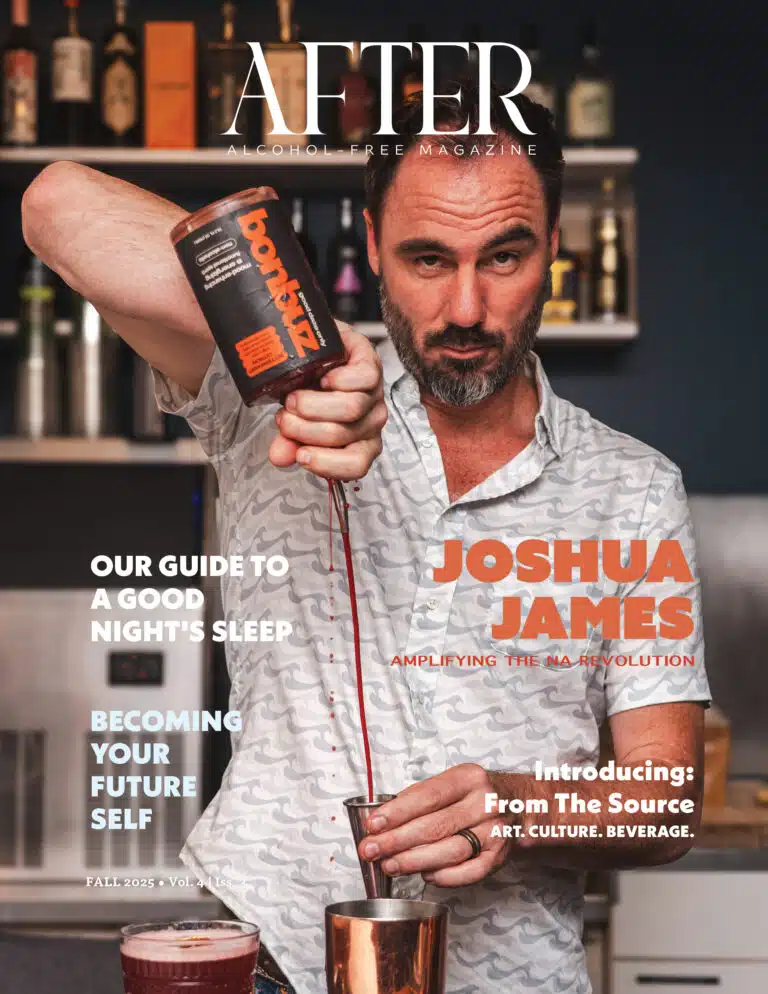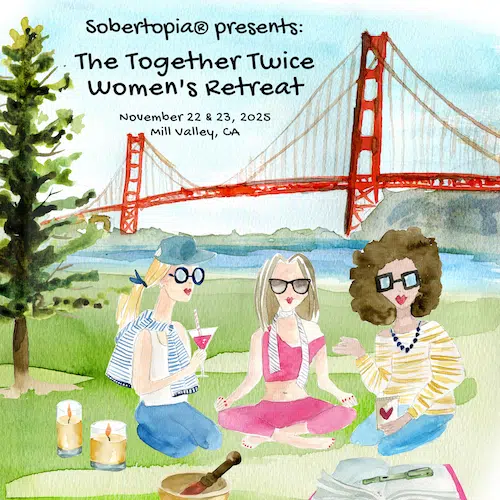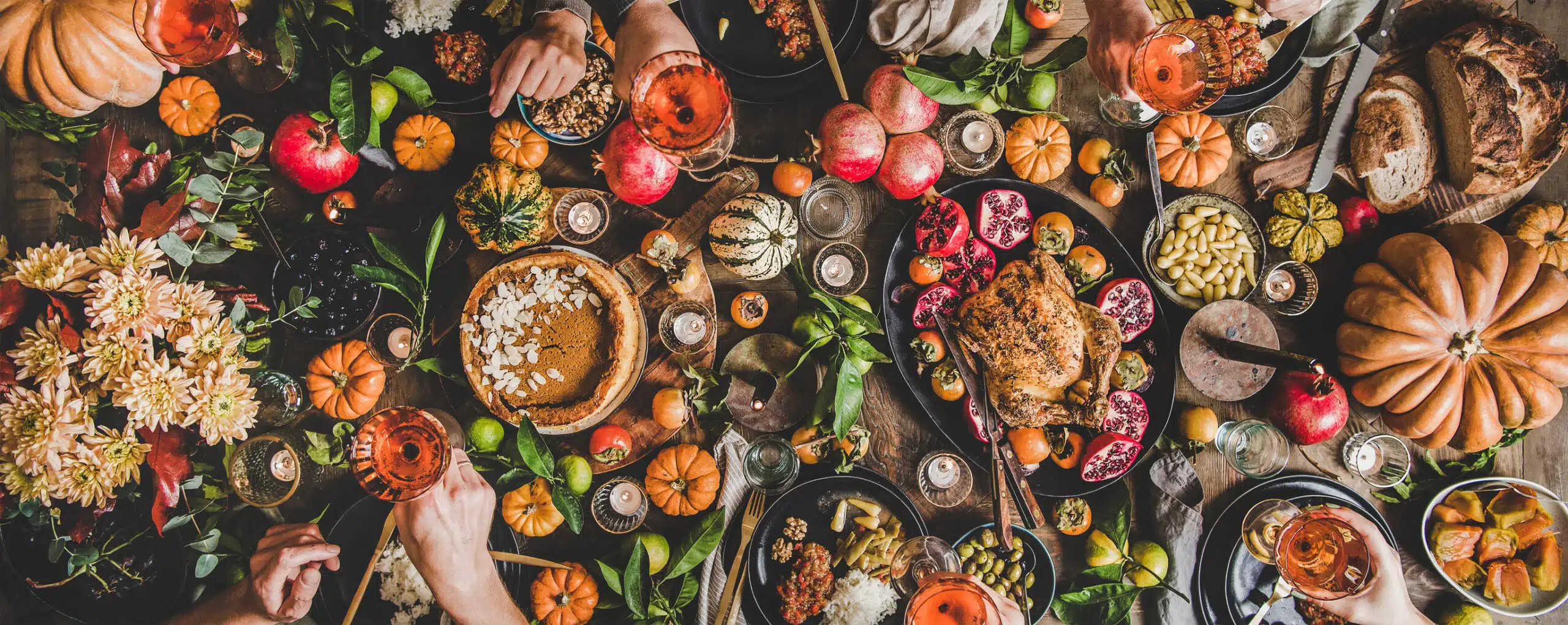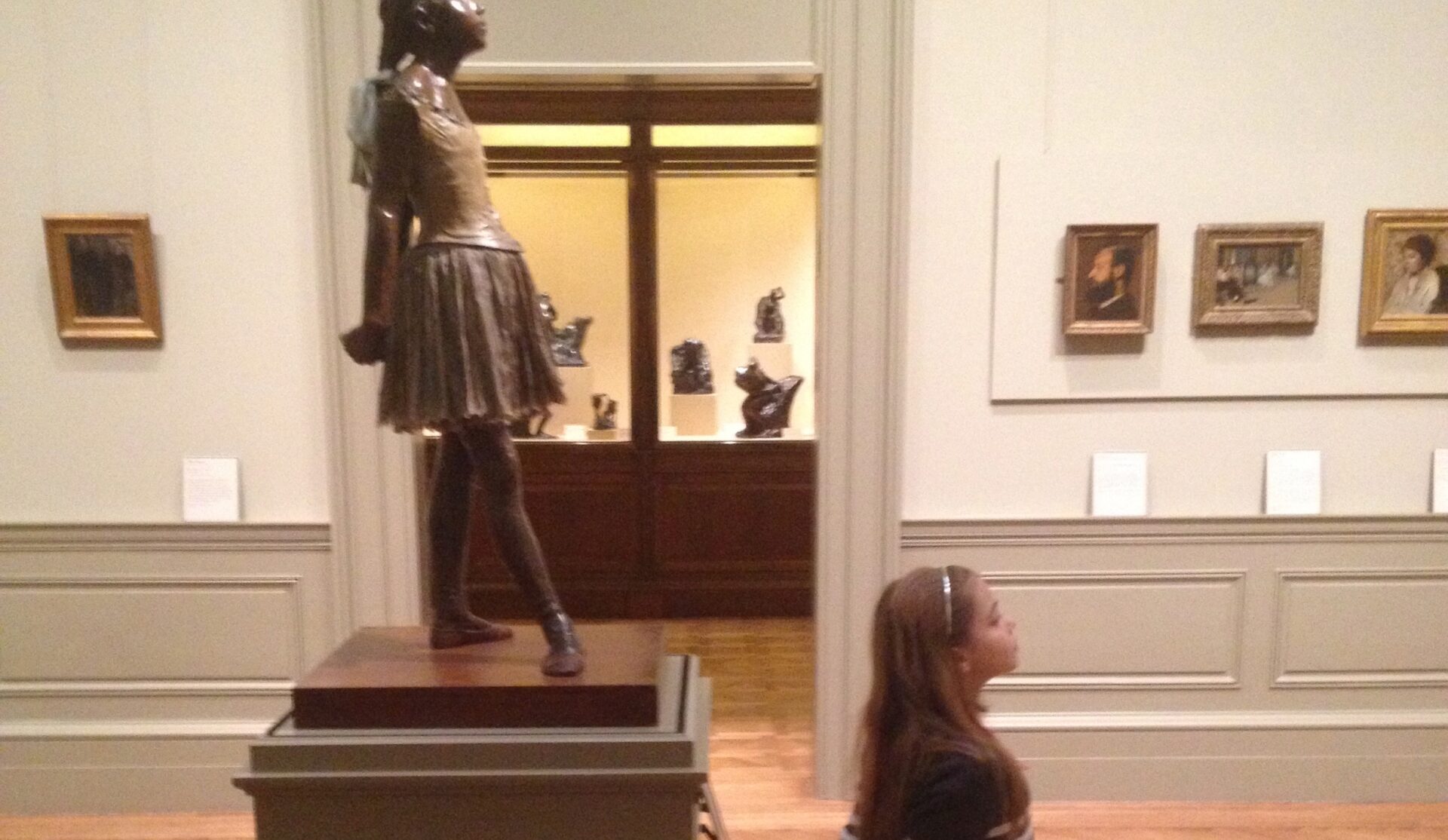I remember the exact moment I knew I was in trouble. It was just after lunch on March 26, 2021. I’d been alcohol-free for about three months, and I was feeling great. But then, this journal entry:
Similar mental gymnastics starting around sugar. Feeling like I deserve a reward or treat, but it makes me feel like shit. Using sugar now as a distraction and escape, excuse to check out. Sugar after lunch=day drinking. Why do I want to escape the present?
In my early days of eschewing alcohol, lots of people—both coaches and peers—said not to worry about relying on sugar for a little boost. “It’s better than alcohol,” they’d say, followed by assurance that the desire would taper off over time. But I knew deep down that I was having a hard time eating sugar in moderation, and I was getting a fix from binging on sugar very similar to the one I had gotten from alcohol. Plus, as I had done with alcohol, I was starting to give sugar a job: to cloud my thinking so I could check out, to make me tired so I would have an excuse not to face tough tasks, or to reward myself for finally tackling those tasks. It was my escape hatch and my life coach rolled into one giant bag of Tootsie Rolls.
I started to wonder if my future would consist of kicking one bad habit only to pick up another, jumping from one feel-good Band-Aid to the next. I also started to wonder if my wine habit had been partly—or even mostly—a sugar habit at its core. I’d struggled with binging on sugar as a teenager, but that seemed to pass once I entered adulthood. Or did it?
Trading alcohol for sugar is a common phenomenon. “It’s the dopamine you’re after more than the sugar itself,” says Brandi Babb, founder of Little Big Leap—a coaching program centered on mindful drinking—and The Zero Proof Life alcohol-free community. “Alcohol and processed sugar both increase dopamine levels more than anything found in nature,” she says. “The brain becomes used to higher levels, so when we quit drinking it takes time for our brains to rebalance and get used to lower levels.” No wonder I was reaching for the sugar. But, also, the bigger picture was slowly coming into focus: Perhaps what I actually have is a dopamine habit.
Many of us think of dopamine as a brain chemical associated with pleasure and reward, and while that is true, dopamine is also integral to the processes of learning and memory. It teaches us to repeat an action that our brains determine is necessary for our survival. “Dopamine creates a pattern,” says Babb. You found berries in the forest when you were hungry—cue the dopamine to help you remember how to get back to that bramble. Is there anything better than an ice-cold glass of water on a hot day? That’s dopamine keeping you hydrated. In the mood for love? Dopamine will ensure the survival of our species! But when we start to introduce things like high-fructose corn syrup or alcohol, our brains get tricked as our dopamine levels spike beyond the natural range. “The brain is learning that processed sugar is necessary for survival,” says Babb, “even though it’s not.”
Sugar—along with many drugs including alcohol—clouds our dopamine sensors, dampening the reward feeling over time, causing us to crave and consume more in order to get the same effect. Is sugar in fact addictive? Credible sources and studies disagree on the answer to that question, but they do agree that unnaturally high dopamine levels create a strong desire to repeat the stimulus. According to Psychology Today, “Controlled research demonstrates unequivocally that sugar has addictive properties.” I concur! What goes on in my brain around sugar—thinking about it, craving it, wanting to quit, not being able to quit—sure feels a lot like an addiction, whether it technically is or not. As Molly Carmel writes in her book Breaking Up with Sugar, “As is the case with other drugs of abuse, we pursue sugar despite negative consequences.”
In addition to messing with our brain chemistry, sugar meddles with our blood, our hearts, our skin, and our teeth; it causes mood swings, energy dips, microbiome imbalances, and systemic inflammation, not to mention its hand in obesity and diabetes. Consumers, myself included, often draw a distinction between natural sugar (fruits, honey, sweet potatoes) and processed sugar (granulated forms, high-fructose corn syrup, malt syrups). I feel a whole lot better—and a lot less inclined to binge—if I stick to the naturally occurring stuff. Scientists and our bodies say sugar is sugar is sugar. All sugars will trigger dopamine, but the trickle from a bowl of cherries is no match for the flood from, say, a bowl or three of Cap’n Crunch.
But why are we so drawn to that dopamine hit in the first place? If our survival boxes are checked—we’ve been fed, we have shelter, we’re safe—why do we sometimes still get fidgety and feel like we just need something to take the edge off? What is going on in our bodies when we are feeling empty or antsy or dissatisfied and want to fill that hole with donuts? Most likely, the nervous system is out of whack and in need of a reset. The autonomic nervous system has two branches that play key roles. The sympathetic branch lights up when we are stressed or in danger; it’s often called the “fight or flight” response. The parasympathetic branch is known for its “rest and digest” state when our systems are humming along and we feel secure and relaxed.
Both of these states have biological functions, and being in a sympathetic state is the body’s natural way of coping with adversity. But we have become so averse to adversity that we want to numb it the minute we start to feel it. When we are activated or triggered by something that’s actually not life-threatening, like a stressful meeting at work, or an unforeseen travel glitch, “our thoughts and emotions take us down a habitually followed route to downregulate,” says Babb. So if we’re accustomed to using things that provide us with unnaturally high doses of dopamine (like processed sugar and alcohol), that’s the route we’ll take. “Those things help us feel like we’re actually landing back in the parasympathetic branch,” says Babb, “but they only provide a limited state of calm, stability, and satiety.”
And there’s the rub. The off-the-charts dopamine hit that follows sugar consumption is only a temporary fix for whatever unease we’re feeling. It sweeps our discomfort under the rug—one woven thick with dopamine’s shiny, ephemeral feel-good threads—and then pulls that rug right out from under us once the effect wears off. This prevents us from truly experiencing or fully resolving any of the feelings that led to our agitated state, which then keeps us reaching for the next donut as we pile one unresolved discomfort on top of the next.
We’ve most likely learned to do this throughout our lives because let’s face it: Big feelings and uncomfortable emotions are not often welcomed or accepted—at home, at school, or in the board room. Think of how many times we were told as children not to cry. We equate big emotions with little babies. Children understand on an intrinsic level that they’ll feel better and work through their emotions if they kick and scream. Animals literally shake it off after a life-threatening experience. But polite society has determined that those things are not polite. Instead, we say “Look at the birdy” (or the iPhone) to distract children, and we offer them ice cream to take away the pain, or use candy to coax them into doing anything they don’t want to do or something they are not ready to do (I confess, I tried the M&Ms for toilet training). We’ve been taught our whole lives to go against our gut instincts. We learned to suppress our emotions and avoid the pain—rather than really feel any of it—in the name of decorum and maturity and bravado. And we’re left seeking a dopamine kiss to make the booboo better.
So what do we do now? How do we kick the sugar without looking to other dopamine dealers like phones or sex or online gambling or binge-watching Only Murders in the Building? How do we free ourselves from this dopamine trap and start learning to get comfortable with the discomfort and process our feelings as they arise?
For me, step one is always knowledge. Knowing that processed sugar is hijacking my brain—in much the same way that alcohol was—goes a long way toward souring my relationship with the sweet. Investigating ways to raise my dopamine levels within the natural range has also helped. Socializing, finishing a work project, having fun with my family, knocking things off my to-do list, playing with the cat—these all trigger healthy dopamine releases. So does exercise, hot baths or cold plunges, and spending time in nature. I know these things are not nearly as alluring as chocolate cake, but deeply internalizing the fact that I’m doing what’s best for my health, in the long run, is a dopamine hit of its own in my book.
It is said that connection is the opposite of addiction; specifically, Dr. Anna Lembke writes in Dopamine Nation, “Compulsive overconsumption of high-dopamine goods is the antithesis of human attachment. Consuming leads to isolation and indifference, as the drug comes to replace the reward obtained from being in relationships with others.” Of course, every day can’t be filled with fulfillment, but I’ve observed that when I’m busy, productive, and connecting with the people I love, sugar takes a back seat. As Evelyn Tribole and Elyse Resch write in Intuitive Eating, “When needs are not met, food becomes more enticing, more rewarding.”
Okay, so we can read the books and do the yoga and take the long walks and run the baths and look for rewarding jobs and cultivate fulfilling relationships, but all of these endeavors involve finding external stimuli to help us regulate our internal nervous systems. What about the intrinsic tools that we were born with, the kicking and the screaming and the shaking it off? Are there other ways our bodies have of downregulating when we’re about to jump out of our skin? To complement her coaching practice, Babb is training in “somatic experiences,” a field of study that specifically targets the nervous system. It uses body-focused exercises to release stress, heal trauma, and regulate the dysregulated.
Babb took me through a somatic exercise called orienting at the end of our phone call. She asked me to do a body scan and note how I was feeling. While I wasn’t in full-on fight or flight, I could feel a low-level tightness in my torso, upper arms, neck, and head. It felt as if my body was anxiously directing all its energy upward toward my brain, which makes sense since I was conducting an interview and had a set of goals and a time limit. I’m sure my body feels this way often, but I had never stopped and taken a moment to notice. Also, I should note, I had already envisioned sitting in front of the TV and eating—probably sugar and probably in excess—once the interview was over.
After the body scan, Babb instructed me to look around the space I was in and just notice everything around me. She told me to choose one thing to look at, and she directed me to soften my focus while intently thinking about the thing. Whatever came to mind, she suggested that I notice what it looks like, where it came from, what its purpose is. I focused on a souvenir a friend had brought me from her travels abroad and felt a wash of gratitude. After a couple of minutes Babb asked me to look around the room again and choose another object to focus on. This time my gaze landed on a painting by a friend, and I felt a wash of awe. Babb instructed me to return to my original position and do another body scan. Lo and behold, the tension was gone, and the tightness was replaced by a feeling of fullness and openness. My energy and attention seemed to be flowing outward rather than inward.
Babb said that is how it feels when my nervous system switches from the sympathetic state to the parasympathetic state. It was a revelation to be able to identify that physical feeling in that moment and know what to aim for in the future. In a matter of moments, I felt grounded and steady and safe, like all was right with the world. And you know what? After I completed the interview and typed up my notes, I ate a quinoa, spinach, and chickpea salad, and didn’t feel my usual urge to dive into the sea salt brownie bites.
When it comes to behavioral change there is debate around the best way to break a habit: Some say to start with the thoughts and beliefs underlying the behavior, and some say to start by changing the behavior and the thoughts and beliefs will follow. I’ve done both in different circumstances with varying degrees of success, but Babb made an excellent point that I hadn’t considered: “We cannot learn when we are in a sympathetic state.” Our brains go offline, so to speak, when we are in fight or flight, and in order to really learn, we need to get ourselves into that parasympathetic rest and digest state. Once there we can evolve our thoughts and beliefs around the thing in question, and maybe even deliver a counter-punch of behavioral change when a craving strikes. We can grow and learn to make better decisions for ourselves in the long run only when we feel safe in the moment.
So, going back to my journal entry, why do I always want to escape the present? Because it’s hard sometimes, that’s why. And uncomfortable and challenging and scary and exhausting. But stepping away from the Swedish Fish and feeling the feelings is the only way through. Temporary pleasure does not lead to lasting happiness, a fact that will surely help me put an end to this sweet story. ***





